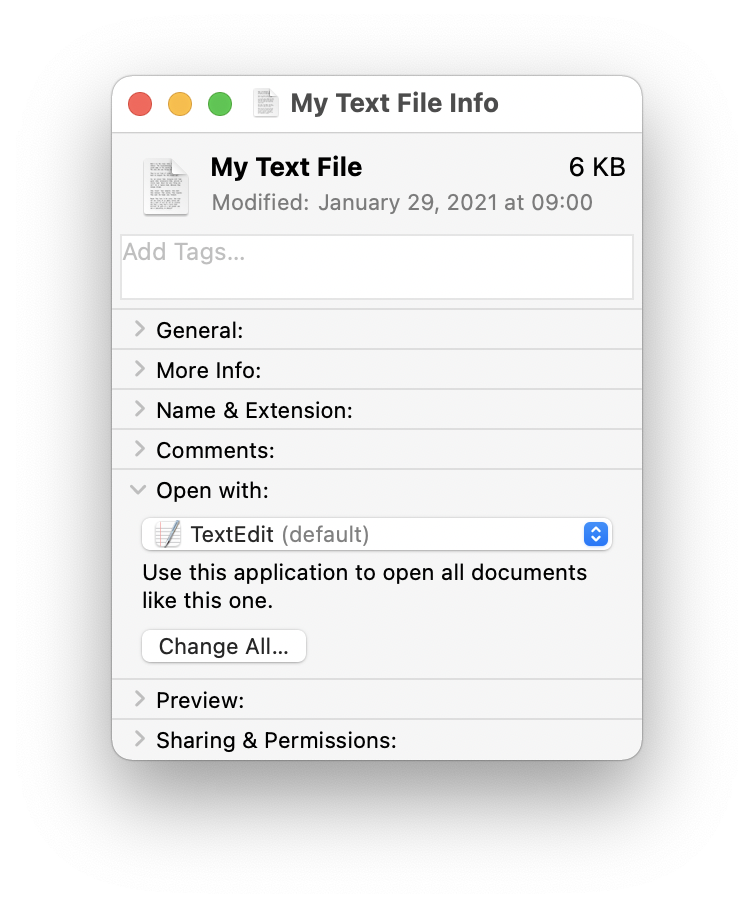

You can’t use a mouse or trackpad in Terminal, but you can navigate using the arrow keys. So when you’re copying a command you see here, make sure you include the spaces and that characters are in the correct case. Firstly, every character matters, including spaces. There are a few things you need to bear in mind when you’re typing commands in Terminal or any other command-line tool. So, to learn more about a command type man, where "command" is the name of the command you want to find out more about.

To see a list of all the commands available in Terminal, hold down the Escape key and then press ywhen you see a question asking if you want to see all the possibilities. You should now see a list of all the files in your Documents folder - ls is the command for listing files. Type lsthen Return (you type Return after every command). Type cd ~/Documentsthen and press Return to navigate to your Home folder. So, for example, to move a file from one folder to another on your Mac, you’d use the "move" command mv and then type the location of the file you want to move, including the file name and the location where you want to move it to. To run a command, you just type it at the cursor and hit Return to execute.Įvery command comprises three elements: the command itself, an argument that tells the command what resource it should operate on, and an option that modifies the output.

But before we do that, it’s worth spending a little time getting to know how commands work. The quickest way to get to know Terminal and understand how it works is to start using it. The app collects data like CPU load, disk activity, network usage, and more - all of which are accessible from your menu bar.
#HOW TO MAKE TXT FILE ON MAC TERMINAL FOR MAC#
Basically, a third-party Terminal for Mac that acts like Finder.įor Mac monitoring features, try iStat Menus. MacPilot allows getting access to over 1,200 macOS features without memorizing any commands. If Terminal feels complicated or you have issues with the setup, let us tell you right away that there are alternatives. If you don’t like the black text on a white background, go to the Shell menu, choose New Window and select from the options in the list. If you want to make the window bigger, click on the bottom right corner and drag it outwards. Bash stands for "Bourne again shell." There are a number of different shells that can run Unix commands, and on the Mac, Bash is the one used by Terminal. In the title bar are your username, the word "bash," and the window's dimensions in pixels. You’ll see a small window with a white background open on your desktop. To open it, either open your Applications folder, then open Utilities and double-click on Terminal, or press Command-space to launch Spotlight and type "Terminal," then double-click the search result. The Terminal app is in the Utilities folder in Applications. Otherwise the terminal itself must save the session iTerm.app probably has more options for this (Session -> Log -> Start) than Mac apps that keep your Mac’s performance under control. ( expect in particular has a log_file option that can be toggled to save everything, but then you'd be writing everything in TCL and not bash.)
#HOW TO MAKE TXT FILE ON MAC TERMINAL INSTALL#
This requires installing expect from a ports system (Fink, Homebrew, or here MacPorts) which should install autoexpect: $ port installed | grep expectĦ:47 up 23 days, 11:32, 1 user, load averages: 1.37 1.39 1.33ĭoing something useful with script.exp in turn probably requires knowledge of expect and TCL, so this is a more advanced option.

Then in the output typescript file there should be a record of the shell session run under script(1).īut wait, there's more! With expect one can also save a session and possibly replay it. Script started, output file is typescriptġ1:30 up 22 days, 16:15, 1 user, load averages: 1.43 1.37 1.38 That is, start a terminal, and run script, issue whatever commands need to be logged, then exit from that shell: $ script This can be done with the standard unix command script(1) though requires running a subshell under the current shell.


 0 kommentar(er)
0 kommentar(er)
